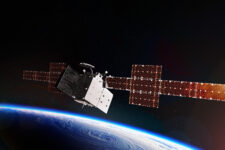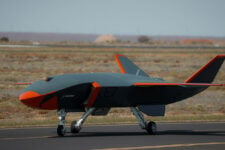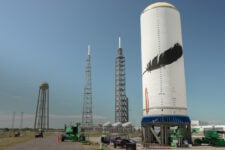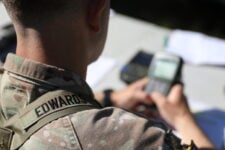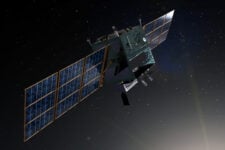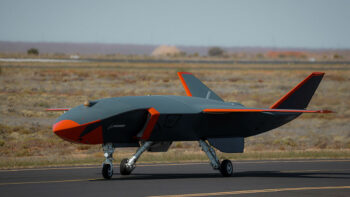
Lt. Gen. Stephen N. Whiting, SpOC’s first commander, handed the reins over Lt. Gen. David N. Miller, Jr. (U.S. Space Force photo by Dennis Rogers)
GEOINT 2024 — The Space Force is doubling down on its assertion that what it deems as “tactical” intelligence, surveillance and reconnaissance (ISR) data must go directly from remote sensing satellites to shooters in all domains, and that combatant commanders need authority to task those satellites.
“Anything that introduces delay in data being provided to commanders and shooters to either defend themselves and their team or prosecute, close with and destroy the adversary, we’re just not going to support that,” Lt. Gen. David Miller told the US Geospatial Intelligence Foundation’s annual GEOINT conference in Kissimmee, Fla. today.
“The joint force commander needs to directly be able to task those [space-based] assets and prioritize retasking. As the battle unfolds, he or she simultaneously needs to be able to get that information delivered directly to the shooters,” he said.
“Operational headquarters and agencies back in the rear don’t win or fight conflicts,” Miller added. “It’s not about offline analysis. It’s providing that directly to the shooters so that they can provide the effects on the battlespace that we need.”
Miller went further by unabashedly wading directly into the ongoing tussle, first reported by Breaking Defense, among the Space Force, the National Geospatial-Intelligence Agency (NGA) and the National Reconnaissance Office about operations of space-based ISR and capabilities — specifically satellites carrying sensors for tracking moving targets on the ground, as well as tactical ISR imagery and analytics provided by commercial space companies.
“Some people are real caught up in those patches on the door. I think we will settle that and get through that. This is really a discussion,” he said.
Miller went on to characterize the current debate as similar to what happens when dogs meet each other at a dog park.
“The dogs like spend five minutes sniffing each other’s butts. That’s the phase I think we’re in. We just need to get off that. Nobody’s here to hurt anybody. Everybody’s a dog; we’re all on the same team; we’re all going to get a chance to play,” he said. “Put your baggage behind you and get focused on the real problem.”
Miller’s comments contrasted sharply with those of NGA Director Rear Adm. Frank Whitworth, who addressed the GEOINT conference right after.
“In spite of what you might have heard or read about any differences in opinion with respect to the way forward in space, I believe we’re collectively figuring out the best way forward,” he said.
On the other hand, Whitworth also took the opportunity to assert that NGA is delivering needed ISR products and insights to combatant commanders in the field, as well as US allies, at speeds required to meet their needs.
“For anyone who suggests we’re not moving as rapidly as possible — in our actions and our products — let me be clear: That’s a complete myth,” he said.
Miller, for his part, argued throughout his presentation that the Space Force, via the Air Force, has a long legacy in providing warfighters what the service now calls “tactical surveillance, reconnaissance and tracking” for targeting weapon systems — citing in particular the development and operations of missile warning satellites.
He further pointed out that the 2024 National Defense Authorization Act (NDAA) gives the Secretary of the Air Force the authority to “for presenting space-based ground and airborne moving target indication systems to the combatant commands” for battlefield missions.
That legislation charged the Air Force to set up a cross-service Moving Target Indication (MTI) Working Group. While the legislation mentions working on MTI acquisition with the Director of National Intelligence, it is unclear what role NRO and NGA are playing.
In a House Armed Services Committee hearing on May 1, NGA Deputy Director Tonya Wilkerson suggested that the agency would participate, if only in a consultative role.
“We look forward to collaborating with our partners within Space Force as well as the NRO in a way that allows for the the leveraging of the expertise and skills that are resident in each of our agencies. We also anticipate that we … have a supporting role in the MTI Working Group,” she said.


